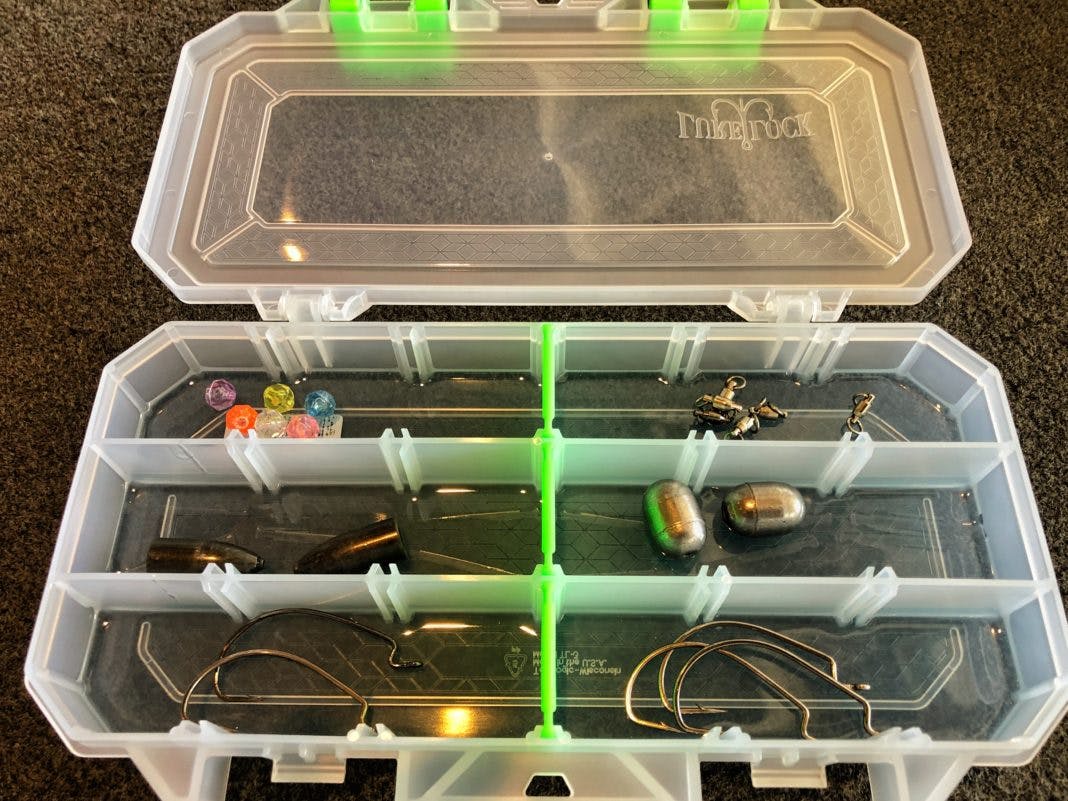
How to Organize Your Tackle Box
As a tournament Bass fisherman, I have found that an organized tackle box is one of the most important things to help maximize your time and efficiency on the water. For the time you spend now organizing tackle, will aid in you finding the items you need quicker next fishing season, resulting in more fishing time.
To keep my tackle organized, I use a variety of Lure Lock plastic cases to customize each case for certain style baits and bodies of water. This way I can easily re-rig rods in the evening before a fishing trip and even more importantly find that key lure when I’m on the water.
I’ll organize my crankbaits by how deep they run and style of crankbait, such as Strike King 1.5’s and Spro Fat Johns in one case, and Rapala DT 6’s in another. Now if I have a lot of a certain style, I have one case for one color palette and a case for another (this is true with me and lipless crankbaits – I have one case for shad-colored baits and another Lure Lock case with crawfish- and chartreuse-colored baits).
The reason that I feel organizing your baits in a layout like this is beneficial, is you can grab the cases you need for that given fishing trip and leave the others at home. This way you limit the amount of tackle you are bringing with you, which a) reduces the amount of clutter and weight in the boat and b) keeps you focused on fishing and not always looking for that next lure to tie on.
For my terminal tackle items, I only want to bring enough weights or jigheads to get me through that day on the water, as I can restock that evening. I follow the same methodology for my hooks, I’ll keep a pack of hooks in every style I may need on the water that day, but then for styles that I know I’ll be using a lot, I throw in an extra pack or two.
As a Bass fisherman, the amount of plastics baits I have is too many to count and is the most common cause of my tackle organization anxiety. I go about storing my plastics in several ways. For the key baits that will always be in my boat and I will always have a good supply of, I’ll pull them out of their bags and lay them in a Lure Lock case that does NOT have the gel in it. These baits for me include all of my Zoom chunks, Z-Craw and Z-Craw Jr.
For the niche plastics that I’ll use on certain bodies of water, or have in my boat for practice and leave in only if I determine they will be a key player, I’ll leave those baits in their original packaging, or put them in a small Ziploc bag. Then I’ll group all of the similar types and put them in a cloth worm bag, which I label with a piece of white electrical tape. Now I can quickly see the bag of finesse worms, grab the needed bait out, or as I’m preparing for a tournament pull that given bag out of the boat altogether.
During the Summer months when I am going from tournament to tournament and lake to lake, I rely on a large assortment of different plastics and other tackle items. I put all of my back up tackle and extra bags of plastics in large bulk cases. These cases I can store securely in my truck and pull out needed items after a day on the water.
Come tournament day, I’ll have a Lure Lock tackle box or two set up specifically for the baits I’ll be using or want to have in the boat. So instead of having all of my Rapala DT 6’s in the boat, I can pull out the few I’ll need or may need and put them in a Lure Lock case with other crankbaits (and because of the gel, the baits won’t get tossed around and become tangled).
I label all of my cases using a household label maker; these labels keep your cases looking neat and allow you to quickly identify what is in them.
So as you have some downtime before your next fishing trip, I encourage you to take the time to sort through your tackle, sell or donate the stuff you don’t need and then organize all of your baits that you’ll be using. You’ll be surprised at much time you’ll gain on the water next year.